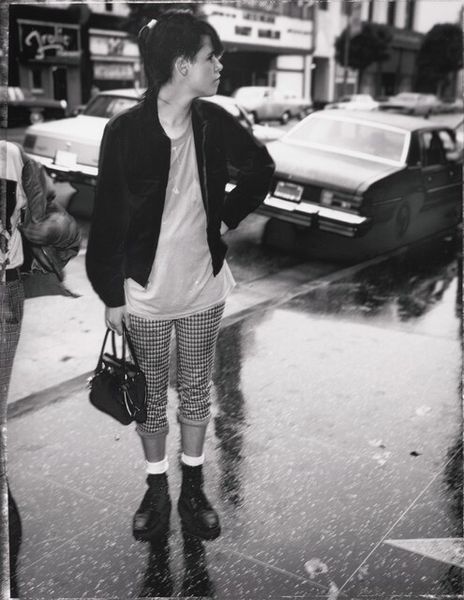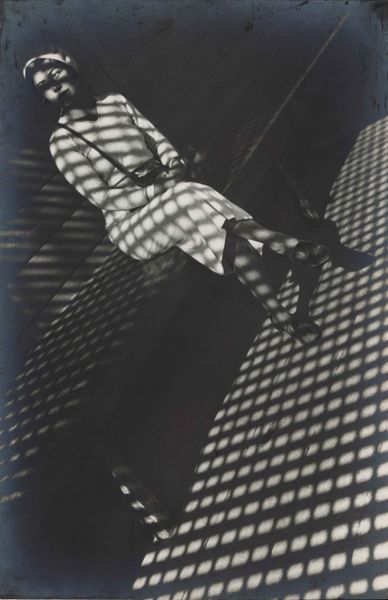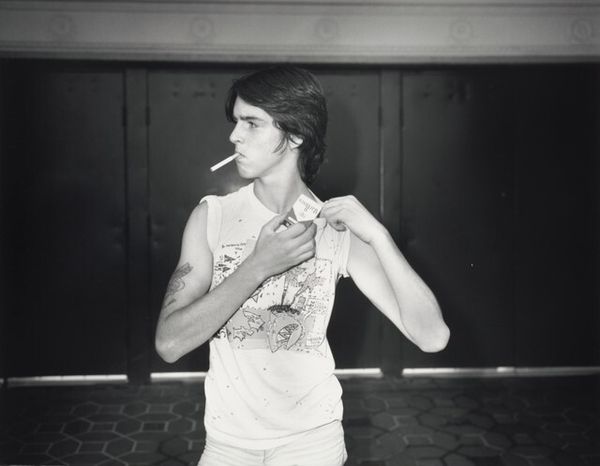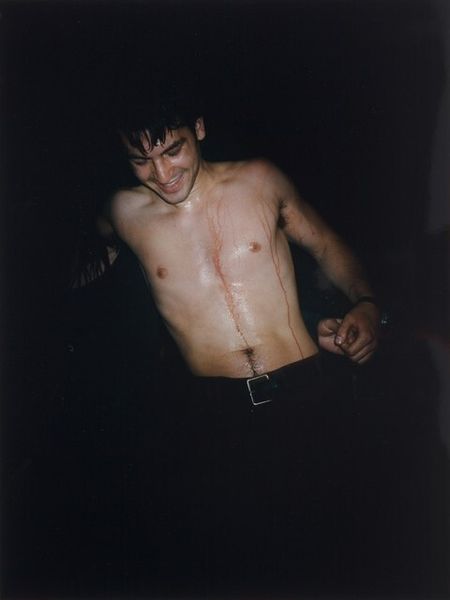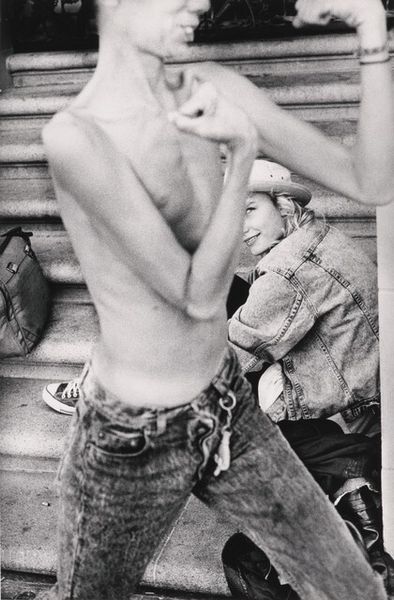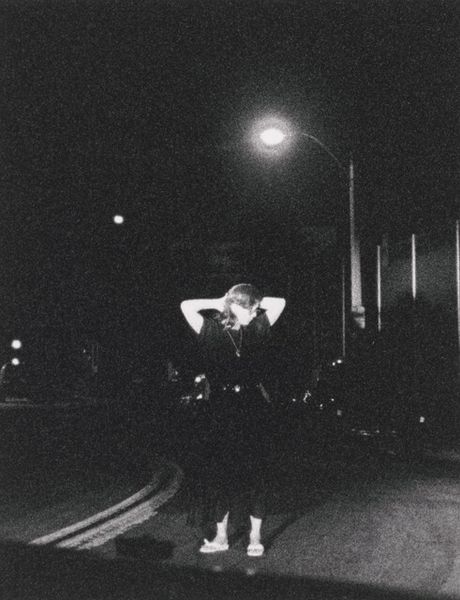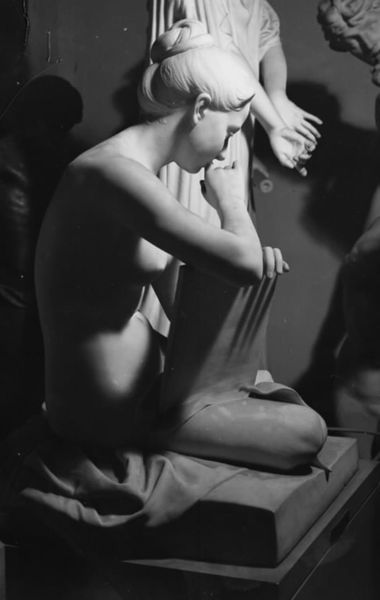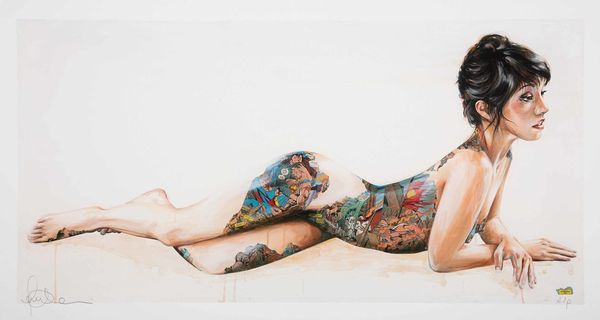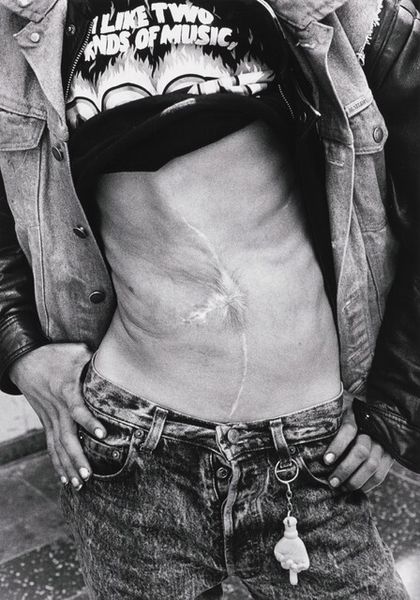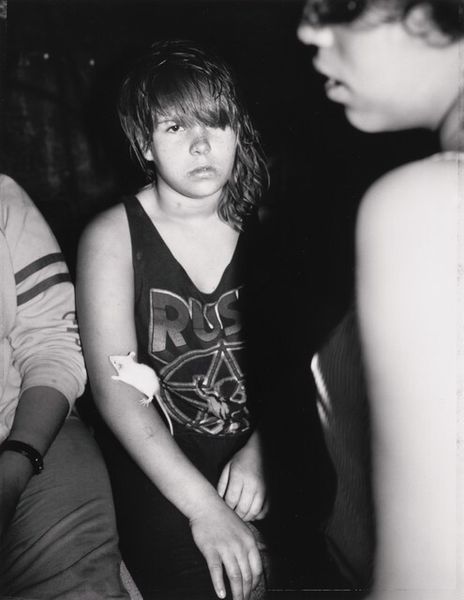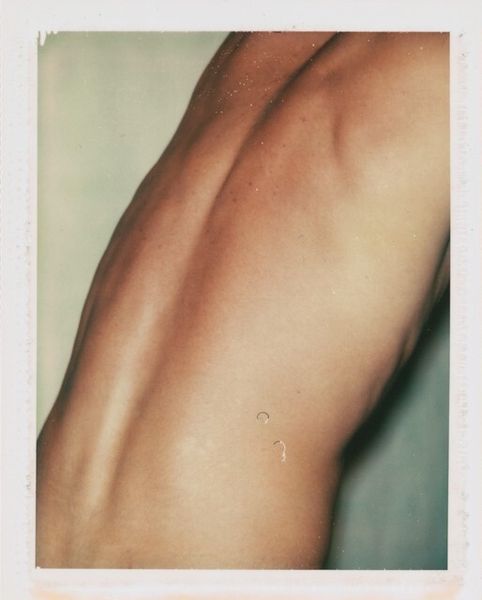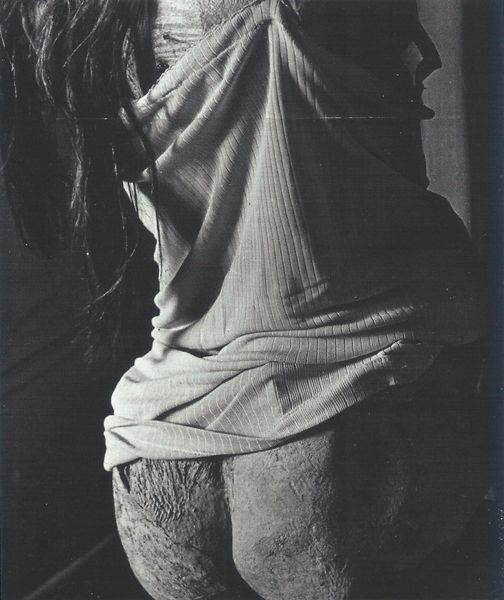
photography, gelatin-silver-print
#
portrait
#
black and white photography
#
figuration
#
street-photography
#
photography
#
black and white
#
gelatin-silver-print
#
monochrome photography
#
monochrome
Dimensions: sheet: 35.3 × 27.8 cm (13 7/8 × 10 15/16 in.) image: 32.2 × 24.8 cm (12 11/16 × 9 3/4 in.)
Copyright: National Gallery of Art: CC0 1.0
Curator: Jim Goldberg's gelatin-silver print, "Tank," possibly created between 1989 and 1994, presents us with a striking figural composition in monochrome. What's your first impression? Editor: My gut reaction? Unease. The high contrast intensifies the sense of vulnerability—this young man's exposed back and the disturbing markings all convey vulnerability. Curator: The tonality is certainly stark. Consider the composition itself: the figure's stance, the blurred background. It emphasizes the diagonal lines established by his posture, from the curve of his back down through his leg. This compositional tension draws the eye and refuses a point of complete rest. Editor: But where is he? Why is his body presented in this way? This photograph feels loaded with societal narratives. It immediately sparks questions about power, representation, and the male body, especially in the context of late 20th-century America. The black fluid—it recalls concerns of toxicity, contamination, or even violence, considering cultural associations between maleness and violence. Curator: Note how the fluid extends the linear aspects in the image overall: its stark visual relationship to the grain in his blue jeans; how the marks form bold lines against the soft light reflected in the glass of what could be an automobile or the surrounding buildings. Goldberg masterfully juxtaposes the gritty texture against moments of smooth gradation to highlight the subject's form. Editor: Exactly, and considering the artist’s focus on marginalized communities, what narrative are we being invited to engage with here? I read "Tank" as more than a mere aesthetic study. It begs for discourse about masculinity, identity, and perhaps the social anxieties that impacted younger generations, which became subject to Reagan's cutbacks, AIDS epidemic fears, and heightened policing and racial bias. This image, viewed in such a context, pushes past the purely formal considerations. Curator: An engaging counterpoint. I concede that such visual juxtapositions are rarely ideologically neutral, as form itself generates significance. We are left contemplating not only what we see but also how the image encourages the audience to contextualize visual experience through sociopolitical means. Editor: Right. By interrogating these social dynamics with a keen eye, photographic artists urge viewers to reconsider not just the aesthetics but also the power structures embedded in their field.
Comments
No comments
Be the first to comment and join the conversation on the ultimate creative platform.
